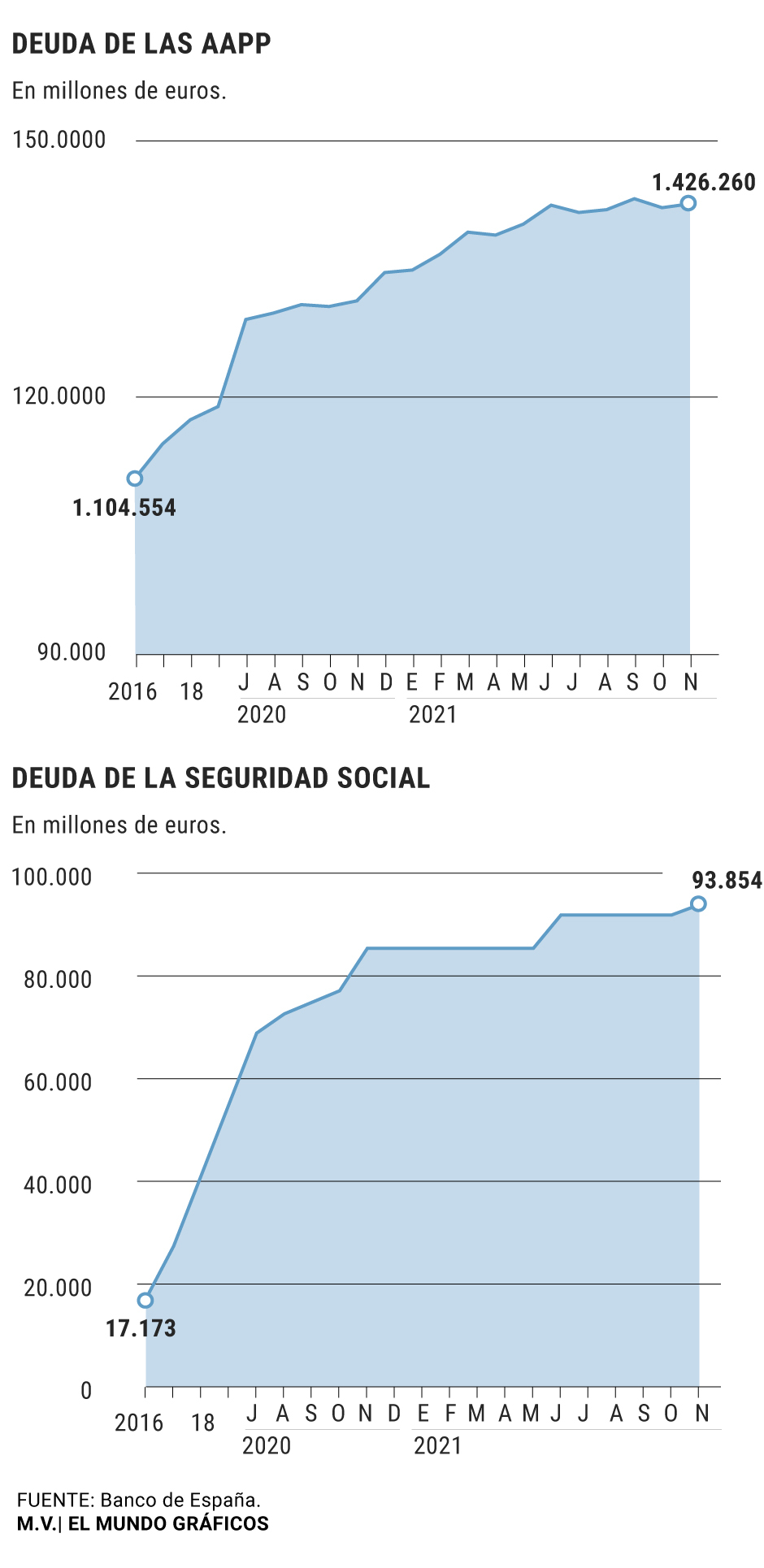The
Social Security debt is already around the huge figure of 100,000 million
euros.
Specifically, according to data from the Bank of Spain, at the end of November last year it reached 93,854 million after a new increase was registered in that month, thus continuing the unstoppable trend of recent years.
So much so that, only since Pedro Sánchez came to the Government, that is, since mid-2018, the rebound is already an alarming 170%.
The debt at that time was just under 35,000 million, a figure that in turn already showed a notable increase over previous years. In other words, that with the Executive of Mariano Rajoy the increase in liabilities was also very significant. But it is that
the socialist government has accentuated and accelerated
this evolution even more.
From the Ministry of Social Security directed by José Luis Escrivá, they point out that the expenses derived from the pandemic are key to the increase. The benefits, the aid and, of course, the lower income. And this is certainly so, but the fact is that even before the coronavirus, the figures were growing very strongly. An example: from that very moment in which Pedro Sánchez arrived at the Palacio de la Moncloa and the end of 2019,
the increase in debt exceeds 20,000 million
.
A key factor in the rebound in Social Security debt is
credit from the State
, which until recently was totally extraordinary, and which has now become a common source of financing. The inability of the system to meet its obligations, which of course include the significant increases in pensions, have made the Government resort to this source of income. And the measures adopted by the Ministry are not, at least for the moment, sufficient. In addition, the Executive cannot go to
the Reserve Fund
, which is already practically exhausted after this same Government and especially the previous one emptied the so-called pension piggy bank that came to have more than 66,000 million.
The Ministry is aware that the debt is obviously very high, and sources from the department headed by Escrivá recall that an "
audit will be carried out on the financing
of expenses of a contributory and non-contributory nature of Social Security" . In the current month of January, the Executive must order the preparation of this report, which will be carried out within a maximum period of six months and will analyze "the period between the years 1967 and 2019, both included."
The data published yesterday by the Bank of Spain also show that
the debt of all Administrations is 1.426 billion euros
. It is not the historical maximum, since the figure for November is slightly lower than that of September, when it reached 1,432 billion. But the foreseeable is that in December there will be a new upturn, with which 2021 would have closed with a new milestone. Most of this liability corresponds to the State, which already started from a very high figure and which, in addition, centralized a good part of the response measures to the crisis derived from the pandemic.
Given these high data, both the BdE itself and the Independent Authority for Fiscal Responsibility (AIReF) have repeatedly asked the Executive for a medium-term debt reduction plan that is "reliable" and "feasible".
However, the
Ministry of Finance considers that this is not the "optimal" time to do so
.
Conforms to The Trust Project criteria
Know more
See links of interest
Last News
Work calendar 2022
Home THE WORLD today
Economy Podcast
How to do
Check Christmas Lottery 2021
Check Child's Lottery
Coronavirus
Real Betis - Alaves
Cadiz - Espanyol

